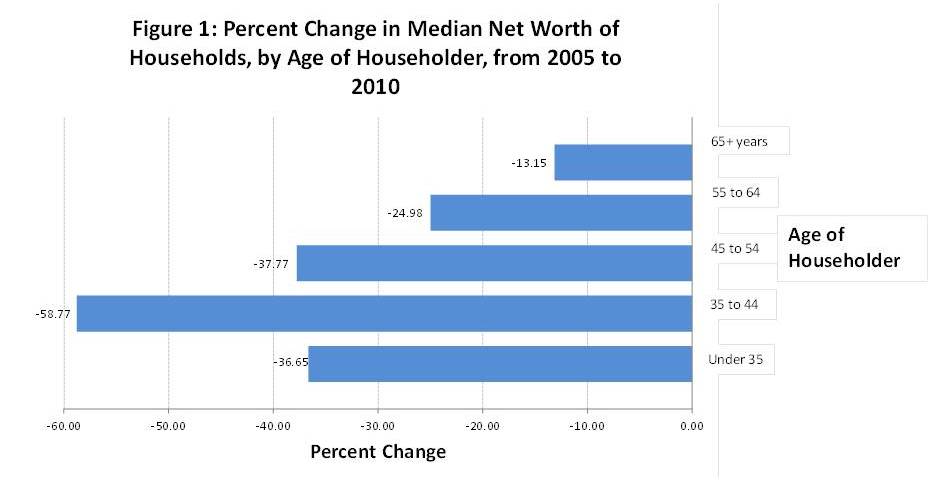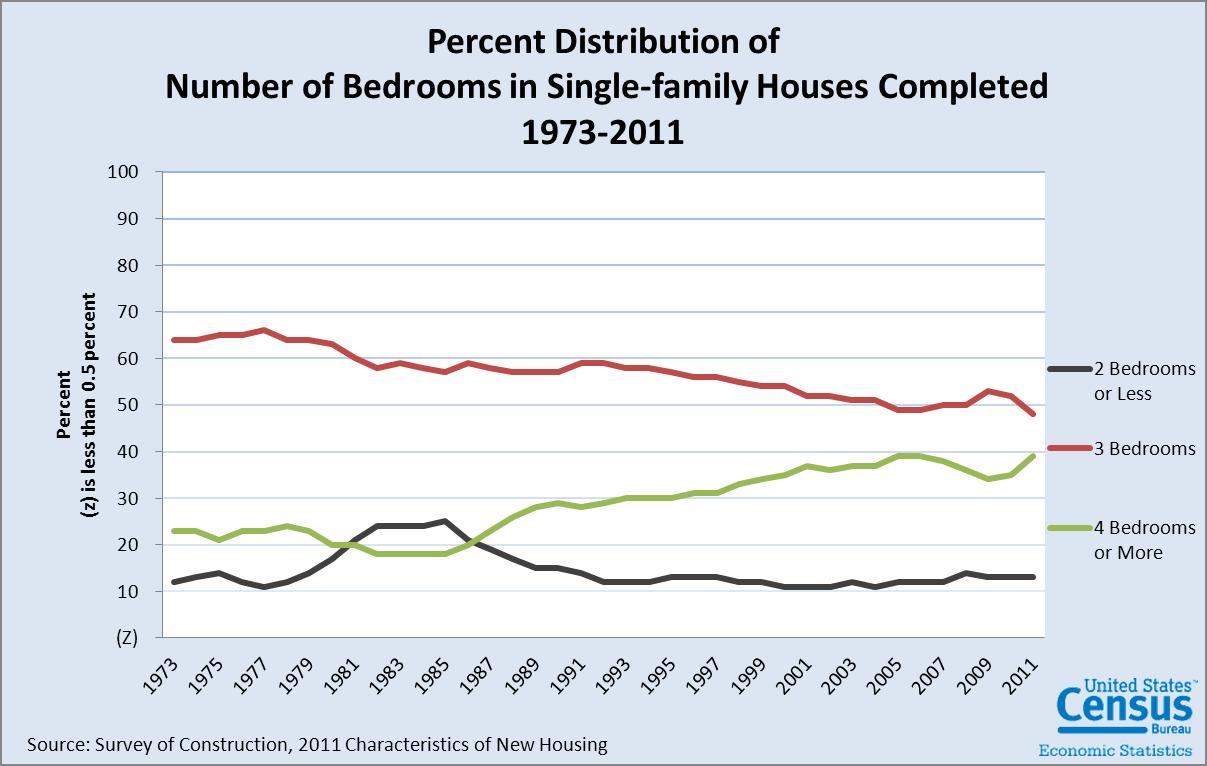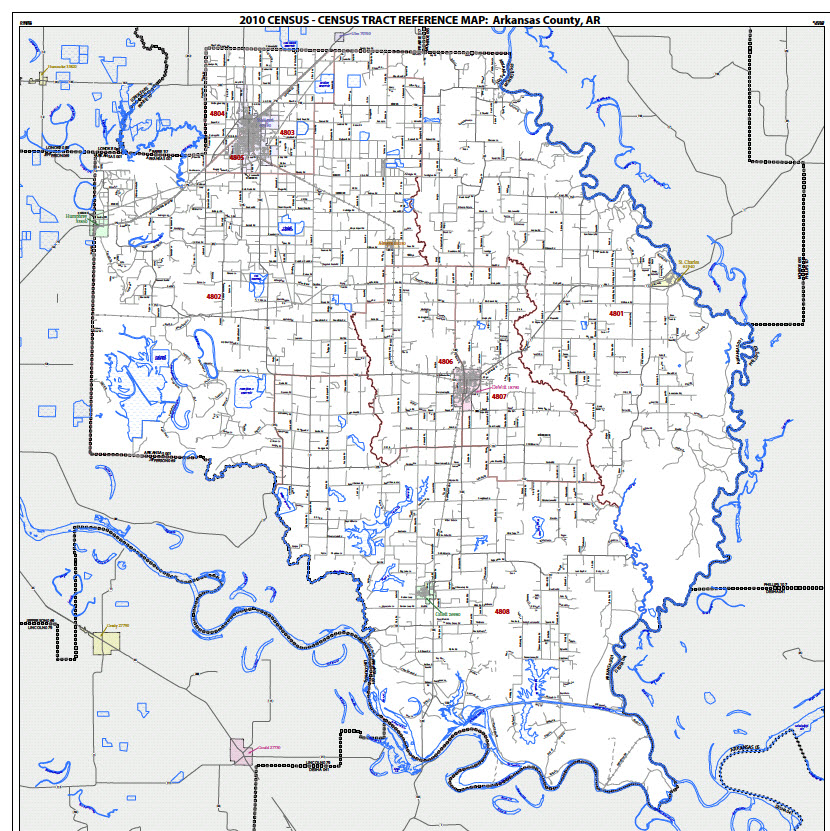Written by: Alfred Gottschalck and Marina Vornovytskyy
Household net worth or wealth is an important defining factor of economic well-being in the United States. In times of economic hardship, such as unemployment, illness, or divorce, a person’s or household’s financial assets (e.g., savings accounts) are an additional source of income to help pay expenses and bills. For individuals and households with a householder 65 years and older, wealth is also an important source of post-retirement income.
For all households, median household net worth decreased by 35 percent from 2005 ($102,844 [+/- 2,606]) to 2010 ($66,740[+/- 1,955]) (All comparisons are significant at the 90 percent level. All dollar figures are in 2010 constant dollars). This decrease in median household net worth reflects the declines in housing values and stock market indices. However, excluding home equity, median household net worth increased by 8 percent from 2009 ($13,859) to 2010 ($15,000).
Compared with those who are older, the young have limited income or savings to acquire various assets, accumulate wealth, and diversify their wealth holdings. Between 2005 and 2010, median net worth decreased for all age groups but more for older householders than for younger ones. For householders 65 and older, median net worth was equal to $195,890 in 2005 and $170,128 in 2010; for householders under 35, median net worth was equal to $8,528 in 2005 and $5,402 in 2010. When looked at in percentage terms, the story is quite different (see Figure 1). Median net worth decreased by 37 percent for householders under age 35 compared with a 13 percent decrease for householders 65 and over. Thus, even though the 65 and over population lost more net worth in absolute terms, the younger age groups were disproportionately affected in terms of the share of net worth lost. The group with the largest decrease in percentage terms was the 35- to 44-year-old group, whose net worth decreased by 59 percent.

Source: U.S. Census Bureau, Survey of Income and Program Participation 2004 and 2008 Panels
http://www.census.gov/sipp/sourceac/S&A04_W1toW12(S&A-9).pdf
http://www.census.gov/sipp/sourceac/S&A08_W1toW6(S&A-13).pdf
From 2005 to 2010, all educational attainment groups experienced decreases in their median net worth. For example, those with a high school diploma saw their median net worth decrease by 39 percent, and those with a bachelor’s degree saw their median net worth decrease by 32 percent. At the same time, higher levels of educational attainment continued to be associated with higher levels of net worth. In 2010, those with a graduate or professional degree had a median net worth of $245,763, while the median net worth of those with a high-school diploma was $42,223. Over the past decade, those with higher levels of educational attainment also fared better than those with lower levels of educational attainment (see Figure 2). In 2000, those with a bachelor’s degree had a median net worth value almost twice as large as those with a high-school diploma; by 2010, this number had risen to almost three and half times as large. The same pattern can be seen when examining the graduate or professional degree to high school diploma ratio; this ratio has increased from 3.5 to 5.8 over the period of 2000-2010.

Source: U.S. Census Bureau, Survey of Income and Program Participation 2004 and 2008 Panels
http://www.census.gov/sipp/sourceac/S&A04_W1toW12(S&A-9).pdf
http://www.census.gov/sipp/sourceac/S&A08_W1toW6(S&A-13).pdf
For additional wealth statistics by select demographic and economic characteristics, please see http://www.census.gov/hhes/www/wealth/wealth.html.











